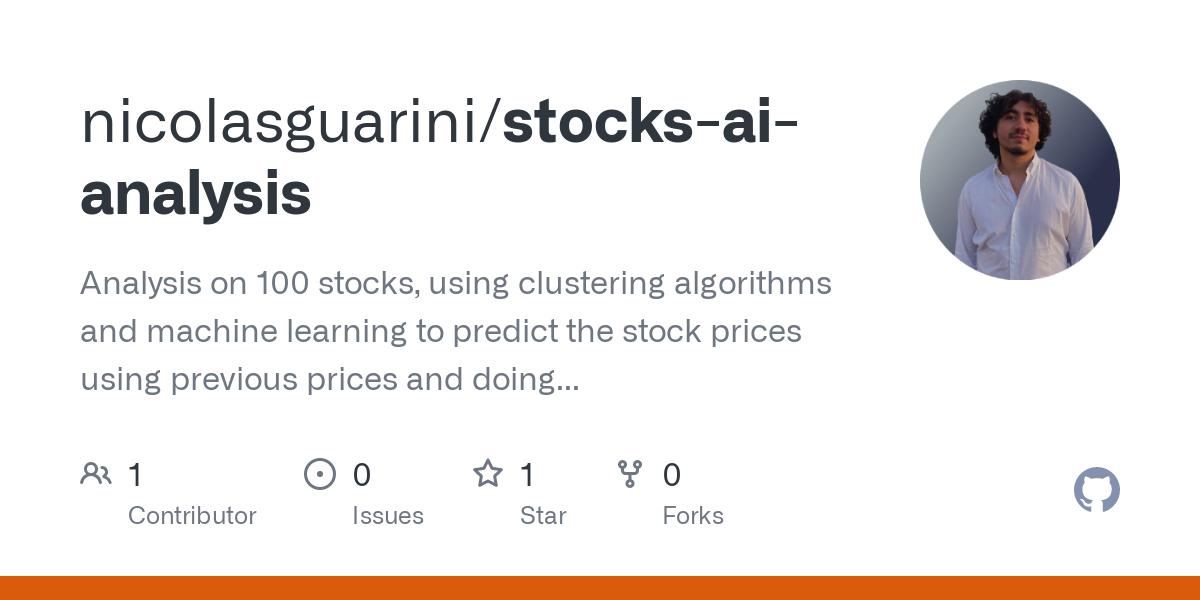20 New Ideas For Picking Best Ai For Trading Sites
20 New Ideas For Picking Best Ai For Trading Sites
Blog Article
Top 10 Tips On Pricing And Costing Of Ai Technology For Predicting And Analyzing Stocks
It is important to assess the price and cost of AI trading platforms that predict/analyze stock prices. This will allow you to avoid any hidden costs or charges. Pricing structures can differ significantly, and knowing exactly the price you're paying is key to making an informed choice. Here are ten top tips to help you evaluate the cost and price of these platforms.
1. Know the Pricing Model
Subscription-based : Find out if there is a monthly fee or an annual fee and the features included in each.
Pay-per-use: Find out if the platform charges according to the amount of usage (e.g. the number of transactions, requests for data, or predictions).
Freemium: Check the extent to which a platform provides an unrestricted free tier or adds additional charges to access premium features.
2. Compare Pricing Tiers
Examining the features that are included in each price level (e.g. basic professional, professional, and enterprise).
Scalability: Make sure the price levels are in sync to your needs.
Upgrade flexibility - Check to see if there are any easy ways to upgrade or downgrade it as your needs may alter.
3. Evaluate Hidden Costs
Data fees: Verify whether the platform charges additional for access to premium data (e.g., real-time data and advanced analytics).
Brokerage charges: Determine whether the platform charges extra costs for execution of trades or integration with brokers.
API usage: Evaluate whether the cost of API access is higher or if API usage is frequent.
4. Demos and Trials are available for free
Trial period. Check out platforms that offer the option of a demo or trial to let you try their capabilities before you commit.
Trial limitations: Decide whether you can utilize all features included in the trial or just the trial's features in a limited amount.
There are no-commitment options. Ensure that you are able to end the trial without incurring any charges when the program doesn't satisfy your requirements.
5. Check for Discounts & Promotions
Discounts on annual plans: Check if there are any discounts that the platform offers compared to their monthly plans.
Referral programs: Verify whether you can earn discounts or credits by sharing the platform with others.
Find out about pricing for institutions when you belong to a large organization.
6. Review the Return on the investment
Cost in relation to. value: Determine if the capabilities and features of the platform justify its cost. Can it save you time, or help make better choices in trading?
Examine the platform's performance track record or user testimonials in order to estimate the potential return on investment.
Costs of other platforms: Compare the costs of the platform with the possible cost of not making use of it (e.g. missing opportunities, manual analyses time).
7. Review Cancellation and Refund Policies
You are able to end your subscription at any time without being charged any penalties or fees.
Refund policy Find out whether the platform will reimburse the amount you paid for.
Auto-renewal. Check whether the platform automatically renews your account. If yes, you'll need to know how to stop it.
8. Transparency in pricing is crucial.
Clear pricing page: Check whether the website has a pricing page which is complete, transparent and does not contain any hidden charges.
Customer Support: Call customer support for clarification of any pricing information that is unclear or additional cost.
Contract terms: Ensure you understand the service terms and any penalty.
9. Compare to Competitors
Comparison of features: Make sure that you're getting the most price and platform by comparing it to its competition.
User reviews: Read reviews from users on the platform, and decide if it's worth it.
Examine the positioning on the market for the platform. Does it fit your needs?
10. Think about the long-term costs
Price increases: Find out whether and how often the platform increases its prices.
Feature Additions: Evaluate whether you have new features in your current package or whether you should consider upgrading.
Costs of Scalability: Ensure that the platform's pricing is fair when your trading activity or demands for data expand.
Bonus Tips
Free trials for various platforms are available to test and evaluate the benefits and performance of different platforms.
Negotiate the price: If are a frequent user or a part of a large institution, ask about special pricing or discounts.
Look for free educational tools and resources. Some platforms offer educational tools or resources that are complimentary.
If you follow these guidelines, you'll be able to assess the price, cost, and the features offered by AI platform for trading stocks. A good-priced trading platform will achieve the ideal balance between affordability and features which will help you maximise your chances of success. Follow the most popular trading with ai for site recommendations including ai copyright trading bot, best ai trading software, ai investment app, ai stock trading bot free, ai stocks, copyright ai trading bot, ai stock, free ai trading bot, ai stock trading bot free, ai trading app and more.
Top 10 Tips To Assess The Risk Management Of Stock Trading Platforms That Use Ai
Risk management plays an essential function in any AI-powered stock trading platform. It protects your capital by limiting losses that could occur and assists you in maximizing profits. Platforms with strong risk management features can help you navigate market volatility and make an the right decision. Here are 10 guidelines on how you can evaluate the risk management capabilities of the platform.
1. Examining Stop-Loss or Take Profit Features
A level that is customizable: You must be able to customize the take-profit/stop-loss levels of your individual trades and strategies.
Trailing stops: Check if the platform you are using supports trailing stop that automatically adjust when the market changes to your advantage.
It is important to determine whether there are stop-loss options that can guarantee your position to be closed at the specified amount, even when the market is volatile.
2. Utilize Position Sizing Tools
Fixed amount - Make sure that you know the amount of your positions relative to a certain amount.
Percentage of portfolio Manage your risk by determining the size of your portfolio proportionally in terms of per percentage.
Risk-reward ratio: Check if the platform supports setting risk-reward ratios on individual trades or strategies.
3. Check for Diversification support
Multi-assets trading: Make sure that the platform can support trading across a variety of asset classes (e.g. stocks, ETFs options, forex and more.) to diversify portfolio.
Sector allocation check to see whether there are any tools that allow for monitoring and managing exposure to the sector.
Diversification of geographic risk: Check if the platform allows trading in international markets in order to spread geographical risk.
4. Evaluating margin and leverage controls
Margin requirements - Make sure that the platform clearly explains the requirements for margins clearly.
Leverage limits: Check whether the platform permits users to set leverage limits to limit the risk exposure.
Margin Calls: Ensure that the platform has sent promptly notifications about margin calls to prevent the liquidation of your account.
5. Evaluation of Risk Analytics and Reporting
Risk metrics: Ensure the platform has key risk metrics (e.g., Value at Risk (VaR), Sharpe ratio drawdown) to your portfolio.
Analysis of scenarios: Make sure that the platform is able to create different scenarios for the market to determine the risk.
Performance reports: Find out if you can get detailed performance reports through the platform. These reports include risk-adjusted performance results.
6. Check for Real-Time Risk Monitoring
Portfolio monitoring: Ensure that the platform provides real-time tracking of the risk exposure in your portfolio.
Alerts and notifications: Examine the ability of the platform to send real-time warnings of events that may be risky (e.g. breaches of margins and stop losses triggers).
Risk dashboards: Ensure that the platform provides customized risk dashboards that give you an entire overview of your risk profile.
7. Evaluation of Backtesting and Stress Testing
Test your strategies for stress: Ensure that the platform you select allows you to test your portfolio and strategies under extreme market conditions.
Backtesting Check if the platform allows backtesting using historical data for assessing the risk and performance.
Monte Carlo: Verify the platform's use Monte Carlo-based simulations to assess risk and estimating a range of possible outcomes.
8. Risk Management Regulations: Assess the compliance
Regulatory Compliance: Verify the compliance of the platform with relevant Risk Management Regulations (e.g. MiFID II for Europe, Reg T for the U.S.).
Best execution: Make sure that the platform follows the best execution practices, making sure that transactions are executed at the highest available price to minimize slippage.
Transparency Check the platform's transparency and transparency in the disclosure of risks.
9. Look for parameters controlled by the user.
Custom risk rules - Make sure the platform allows the user to set up your own risk management rules.
Automated risk controls: Verify that the platform is able to automatically enforce risk management rules based on your predefined parameters.
Manual overrides: Check if the platform allows manual overrides for automated risk controls in case of emergencies.
10. Review User Feedback and Case Studies
User feedback: Read user reviews to determine the platform's capacity to manage the risks.
Case studies: Seek out examples or testimonials that demonstrate the platform's risk management capabilities.
Forums for community members. Check to see whether the platform has a vibrant user community, where traders share risk management strategies and advice.
Bonus Tips
Trial period: Take advantage of the demo or trial version for free to try out the platform's risk management features in real-world scenarios.
Customer Support: Verify that the platform is able to provide comprehensive support in the event of any risk management-related questions or issues.
Educational resources: See whether the platform offers instructional resources or tutorials regarding risk management best practices.
By following these tips, you can effectively assess the risk managing capabilities of AI platform for analyzing and predicting stocks, ensuring you choose one that will safeguard your investment and reduce possible losses. Effective risk management tools are crucial to navigate volatile markets and achieving long-term trading success. View the recommended incite ai recommendations for blog advice including ai stocks to invest in, stock analysis tool, ai investment app, trader ai intal, ai stock price prediction, ai invest, stock analysis app, best stock analysis app, best stock advisor, ai copyright trading bot and more.